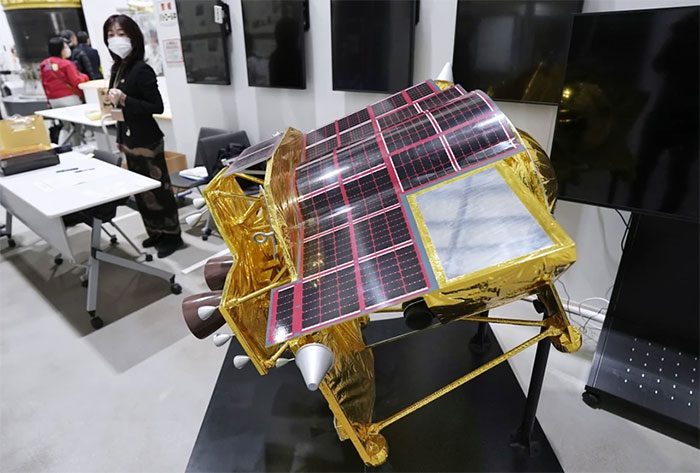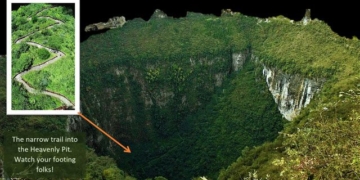The Smart Lander for Investigating Moon (SLIM), operated by the Japan Aerospace Exploration Agency (JAXA), has successfully survived a lunar night (equivalent to two Earth weeks) under freezing temperatures on the Moon.
On February 26, JAXA announced that the Smart Lander for Investigating Moon (SLIM) had survived the lunar night in conditions of freezing temperatures, despite the spacecraft’s design not being suitable for such a scenario.

The model of the Smart Lander for Investigating Moon (SLIM) displayed at the Japan Aerospace Exploration Agency facility in Sagamihara, Kanagawa Prefecture, on January 19, 2024. (Photo: Kyodo/TTXVN).
The SLIM successfully landed on the lunar surface on January 20. With this achievement, Japan has become the fifth country to successfully land a spacecraft on the Moon, following the former Soviet Union, the United States, China, and India.
However, shortly after landing, the SLIM lost power because its solar panels were not positioned correctly towards the Sun.
As a result, the lander entered a “sleep” state at temperatures as low as -183 degrees Celsius. More than a week later, the solar panels regained power thanks to the change in sunlight direction.
On the night of February 25, JAXA reestablished contact with the SLIM and received a response, confirming that the lander was operational again and maintained communication with the ground. Previously, JAXA had indicated that the SLIM was not designed to survive a lunar night.
JAXA reported that the SLIM’s multi-band camera is searching for a mineral called “Olivine” on the lunar surface, which will be analyzed for its composition.
Comparing this mineral with samples found on Earth will help provide evidence for the hypothesis regarding a significant collision (Big Bang), suggesting that the Moon was formed due to a collision between Earth and another planet about 4.6 billion years ago.




















































